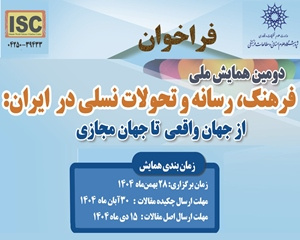مدلسازی گسترش فضایی جزایرگرمایی شهری در کلان شهر رشت (مقاله علمی وزارت علوم)
درجه علمی: نشریه علمی (وزارت علوم)
آرشیو
چکیده
امروزه در بسیاری از کشورهای دنیا، مسائل زیست محیطی اهمیت بالایی برای پژوهشگران دارد. در این زمینه گسترش فضایی جزایر حرارتی شهری یکی از مهم ترین مسائل زیست محیطی است. جزایر گرمایی شهری به دلیل گسترش فعالیت های انسانی و غلبه محیط های مصنوعی بر محیط های طبیعی شکل می گیرند. هدف اصلی از انجام این پژوهش، تحلیل فضایی و شناسایی کانون های جزایر گرمایی شهری در کلان شهر رشت بود. تعداد چهار شاخص اصلی شامل تراکم کاربری ها، زیرساخت های سبز، حمل و نقل و تراکم شهری برای مطالعه انتخاب شد. برای گردآوری اطلاعات، از مطالعات میدانی، نرم افزار Google earth، طرح تفصیلی و پرسشنامه استفاده شد. برای بررسی وزن نسبی شاخص ها از روش مقایسه زوجی استفاده شد. برای تجزیه و تحلیل اطلاعات، از ابزارهای تحلیل فضایی و مدل Zonal Statistic در نرم افزار Arc Map استفاده شد. نتایج نشان داد، شاخص حمل و نقل با ضریب 44/0 نسبت به سایر شاخص ها از اهمیت بیشتری در زمینه شکل گیری جزایر گرمایی شهری برخوردار بود. شاخص تراکم کاربری ها با وزن نسبی 341/0 در رتبه دوم قرار گرفت. شاخص های تراکم شهری و همچنین زیرساخت های طبیعی به ترتیب در رتبه سوم و چهارم قرار گرفتند. براساس نتایج به دست آمده از همپوشانی شاخص ها، کانون جزایر گرمایی شهری در کلان شهر رشت، در محلات باقرآباد، چله خانه و محله بازار شناسایی شد. تحلیل های فضایی نشان داد که روند گسترش فضایی جزایر گرمایی به سمت محلات غربی شهر مانند پیرسرا و ضیابری است. مطابق با نتایج پژوهش، در 26 درصد از محدوده قانونی شهر رشت، احتمال شکل گیری جزایر گرمایی شهری، بالا و بسیار بالا بود. همچنین 48 درصد از محلات شهر رشت یعنی، 26 محله از 55 محله شهر، با شدت بالا و بسیار بالای جزایر گرمایی شهری مواجه بودند؛ از این رو ضرورت دارد تا مدیران و مسئولان شهری، در برنامه ریزی برای آینده شهر رشت، به این مسئله توجه بیشتری داشته باشند و سیاست هایی در پیش بگیرند که کاهش اثرات و پیامدهای منفی این مسئله را به همراه داشته باشد.Modeling the Spatial Expansion of Urban Heat Islands in Rasht Metropolitan
Today, in many countries of the world, environmental issues are very important for researchers. In this field, the spatial expansion of urban heat islands is one of the most important environmental issues. Urban heat islands are formed due to the growth of human activities and the dominance of artificial environments on the natural environments. The main purpose of this research was spatial analysis and identification of urban heat islands in Rasht metropolitan. In this regard, four main indicators (Density of land use, Green Infrastructure, Transportation, and Urban density) were selected. Environmental studies, Google Earth software, the master plan of Rasht, and the questionnaire method were used to collect information. The pairwise comparison method was used to investigate the relative weight of the indicators. For data analysis, the Arc Map software used spatial analysis tools such as point density, line density, kernel density, interpolation, Euclidean distance, and Zonal Statistic model. Results showed that the transportation index with a coefficient of 0.44 was more important than other indices in the formation of urban heat islands. The index of the land use density with a comparative weight of 0.341 was the second most important index. The indicators of urban density and natural infrastructure were the third and fourth most important indicators. According to the results obtained from the overlaying of the indicators, the center of urban heat islands was identified in Bagharabad, Chelekhane and Bazar neighborhoods. Spatial analysis showed that the spatial expansion of urban heat island is towards the western neighborhoods of Rasht such as Pirsera and Ziabri. According to the results of the research, in 26% of the Rasht area, the possibility of the formation of urban heat islands was high and very high. Also, in 48 percent of the neighborhoods of Rasht city, in other words, 26 out of 55 neighborhoods of the city the intensity of urban heat islands was high and very high. Therefore, managers and city officials must pay more attention to this issue in planning for the future of Rasht City and adopt policies that reduce the negative effects and consequences of this issue.








